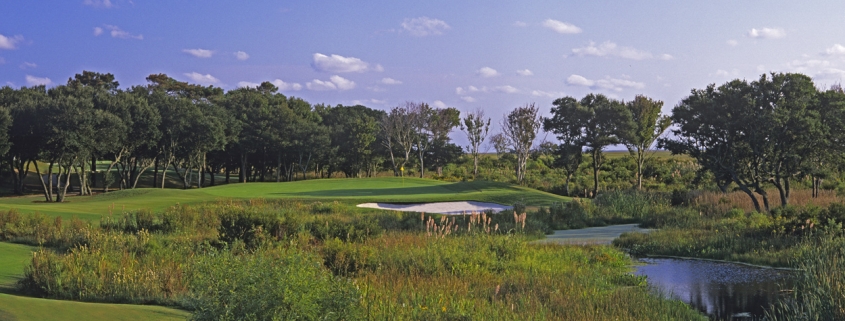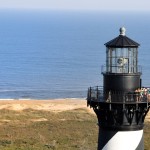Bank On It
It was supposed to be merely the tune-up trip – final preparations for play on the game’s grandest stage in the British Isles. But a golf journey to North Carolina’s Outer Banks made its own lasting impression.
Last Autumn, a five-round, four-night golf adventure along North Carolina’s northeastern barrier islands was strategically chosen for its seaside positioning and potential windswept nature. The Wright Brothers came to the Outer Banks hoping for consistently faster winds and higher air density to help lift their “flying machine” off the sandy soil in the early 1900s. And they got them. So, it was only natural that our golf group should seek out those precise conditions in order to prepare for an impending challenge against three famed Open Championship venues that exist along England’s northwest coast. Not surprisingly, we got the winds too.
As it turned out, the only real surprise surfaced a week later while playing amongst the dunes that defend against the cold, battering winds that typically sweep off the Irish Sea. As rounds persisted across historic Royal Liverpool (Hoylake), Royal Lytham and St. Annes, and Royal Birkdale, one couldn’t help but think back to the days immediately prior.
Through the chilly British dreariness arose memories of warm Atlantic Ocean breezes, sound-side vistas, brilliant sunshine, sweet southern hospitality and quality food. Oh, that Tar Heel food. It’s no secret that the English fare can be dreadful in the pubs and taverns so far away from home. Never before had the words of James Taylor rung so true: “Gone to Carolina in my mind…” It was decided then. Our next golf trip stays on home shores.
Granted, the extraordinary linksland, the game’s rich tournament history, and those unpredictable elements of nature found in the British Isles (not to mention driving on the “wrong” side of the road) make up and experience that should be on every serious golfer’s bucket list. But for all the quality, ease, accessibility (from the “right” side of the road) and value available much closer to home, it’s not a stretch to say that a memorable golf trip in its own right can also be had along the Carolina coast – specifically, the Outer Banks.
But why this particular stretch of beach?
Well, because OBX, as it is known as in local parlance, is simply different. Not unlike golf in the Old Country, it’s pure. It’s not the trumped-up, touristy golf destination that has developed over time in other coastal towns. Instead, it is a throwback coastal retreat with a charm that is preserved not only in its distinct culture but across many of its big-name golf designs as well.
Arguably the state’s most enchanting tourist destination, the Outer Banks is a true American treasure.
The region has always been known as a family-oriented destination, with plenty of sand, sun, sea and saltwater to excite even the calmest of children. In recent years, OBX has begun to assert itself as a true golf destination, with an array of courses that are more closely tied to all of nature’s coastal elements than what you’ll find in other East Coast golf destinations.
During our visit, we found two courses positioned on the actual barrier island possessing qualities most closely representing what we would eventually face in the British Isles. Nags Head Golf Links, located on the south end, challenged us with several holes routed right along the Roanoke Sound with winds that seemingly changed by the minute. The front nine’s fifth and ninth and the back nine’s 15th and 18th holes actually play right along the water in opposite directions, making club selection more art than science. On this day, the back-nine holes played at least one club less downwind while the front-nine holes had us swinging out of our shoes with a few extra clubs. Though not located directly on the water, the well- bunkered, 160-yard, par-3 17th hole (with sound waters lapping just beyond the dunes that surround the green) provided the best imitation of what I would routinely experience the following week in the UK.
We also played at the Currituck Club, located 45 minutes north of Nags Head on the top end of the barrier island. There we enjoyed the Rees Jones-designed layout that winds through a premier, gated community in Corolla and features diverse coastal terrain (including sand dunes, wetlands, maritime forests and sound-side shoreline) and glimpses of the Currituck Sound, particularly on signature holes at the par-5 seventh and par-3 15th. Like all the great links courses abroad, the Currituck Club can change complexion according to the wind speed and direction. Play it on three consecutive days and you’ll likely enjoy three different experiences.
The three mainland courses included on our itinerary were Kilmarlic, The Carolina Club and The Pointe. Since our group actually stayed in a golf cottage at Kilmarlic and since it is so conveniently situated, we developed a particular affinity for this upscale Tom Steele design. Though more heavily wooded than the island courses and thus less impacted by coastal breezes, Kilmarlic challenges you with substantially more water hazards. In fact, there are only three holes on the entire course devoid of a wetland or water feature. This forces you to think your way around the layout that stretches a modest 6,560 yards in length. Probably the most memorable hole at Kilmarlic is the 201-yard, par-3 17th. A precise shot over marsh (that runs along the entire left side and then wraps around back of a bulkheaded green) is required to hit dry land.
The Pointe, meanwhile, is a traditional design that spreads out across the rural Carolina mainland. Like Kilmarlic, The Pointe’s greatest defense is in the form of water with 15 holes sporting some sort of wet lateral challenge. Since we had heard that it was more player-friendly than the others in the area, we positioned it at the front of our Outer Banks golf agenda.
Last but not least, The Carolina Club was played on the way out of town before heading back home north. There we discovered a big, brawny layout (especially in relation to the others in the region) that stretches to within lob wedge distance of 7,000 yards. Designed by popular architects Russell Breeden and Bob Moore, the layout is more open than its mainland brethren making the winds more significant. The signature hole at The Carolina is the 166-yard, par-3 seventh. It showcases an island green that can be difficult to hit when the ocean breezes kick up and penetrate the mainland.
As serious golfers, we elected to challenge our games on all the major players in the Outer Banks region – namely Nags Head, The Currituck Club, Kilmarlic, The Pointe and The Carolina Club. But whatever combination of golf courses you choose on your visit, just don’t go there thinking that the trip is going to be a steppingstone to something greater. The OBX golf experience can certainly hold its own against all others – near or afar.





